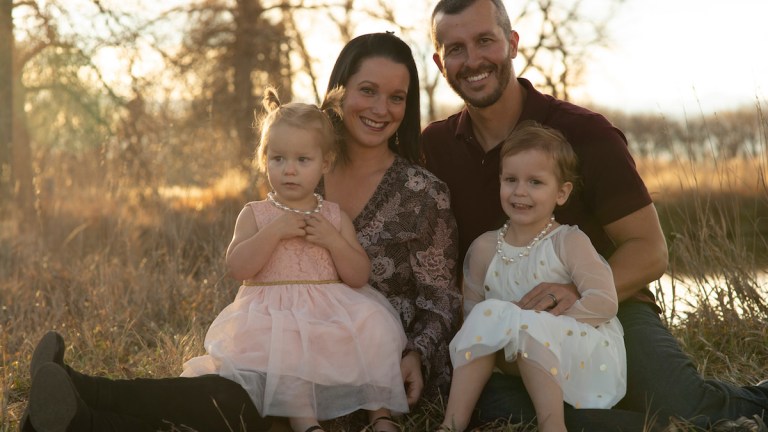American Murder: The Family Next Door: How Far is Too Far for True Crime?
In Netflix documentary American Murder: the family next door we see footage from the time before and right after Chris Watts murdered his wife and daughters. But should we be watching this?

The latest buzzy Netflix documentary tells the story of Chris Watts who murdered his pregnant wife Shanann and their two daughters Celeste and Bella. In this doc we hear the 911 call from Shanann’s friend Nickole Atkinson the morning of her death and the police footage of the moments they arrived at the house to find a frantic Nickole and later a very cagey Chris Watts. We see the last text messages Shanann sent and the last moments her daughters were alive. And we see Chris Watts lying about Shanann and their kids’ disappearance mere hours after he had killed them all. It is tough.
Streaming services are packed to the rafters with murder documentaries, while true crime seems to be an ever increasing preoccupation. From the internet sleuths of Don’t F**k With Cats, questions about the American legal system in Making A Murderer to the shocking self-incrimination of Robert Durst in The Jinx, true crime docs have to rely on ever more sensational stories, or formats, to stand out.
American Murder: The Family Next Door takes another new approach. The whole thing is pieced together from police and media footage, videos and posts on social media as well as text messages between the main players. This means there is no narration, no after-the-fact interviews, no commentary or analysis. It means the film is not subject to unreliable opinion or flawed memories, 20-20 hindsight or retrofitting the truth. There’s no bias and no sides but also there’s no explanation – or at least none that feels bearable or plausible.
In a way it’s an incredible documentary, a look at the days and weeks before Shanann, Celeste and Bella went missing, and what happened immediately after including police footage of Chris just hours after he had dumped his three-year-old and four-year-old daughters’ bodies in oil tanks and buried his 15-weeks-pregnant wife in a shallow grave. We see him talking to the press, pleading for the family’s safe return and his strange behavior as identified by a neighbor who has CCTV of Chris leaving in his car in the early hours.
We also see multiple videos of Shanann talking about how much she loves Chris and of the moment Chris found out she was expecting their third child. We read the text messages they exchanged when she was on her way home from a business trip just hours before he murdered her, and the text exchanges with her friends about Chris. And we also see extensive footage of their two daughters playing with their dad and singing him a song about how he is their hero.
It is, to say the least, extremely upsetting.
It also poses a question: if we are going to watch these things, where do we draw the line? Fans of true crime often talk about reasons, beyond morbid fascination, that they are interested in the genre. True crime fans are predominantly female, and some talk about their fascination in relation to avoiding being a victim of crime themselves (the ‘stay sexy, don’t get murdered’ factor, to quote popular podcast My Favourite Murder). Miscarriages of justice hold a strong draw too – most of us can’t imagine ourselves as a murderer but we could just about imagine ourselves being wrongly convicted, as was the case with Amanda Knox, making that documentary particularly compelling.
Neither is the case here though. The Watts case is so utterly terrifying because it shows us a bloke who looks incredibly normal, with a wife and kids who clearly love him. There are problems in the relationship – turns out Chris was having an affair though Shanann didn’t know that, or certainly not until the end – but to all intents and purposes this was an ordinary man who did something utterly unspeakable and the only reason seems to have been so he could go off with his new girlfriend. That it utterly defies logic makes it impossible to learn anything from. This crime, the doc gently hints, was very likely premeditated. Not a crime of passion, not something done in the heat of the moment – and the way Chris describes driving his daughters in the car with the body of their mother out to the field whether he would kill them is frankly harrowing.
The Watts murders would come under the category of ‘family annihilation’ – multiple murders where a whole family is wiped out. These crimes tend to be committed by white males in their 30s and often in August (before school starts back so detection is delayed) – both of which match with Chris Watts, but a study by British criminologists identified four main types of motives for family annihilation: self-righteous (blames the mother for family breakdown), anomic (associates family with economic success, destroys them when he loses this), disappointed (family doesn’t live up to expectations – honor killings come under this banner), and paranoid (thinks he protecting family from something worse).
Chris doesn’t seem to match any of these. His motivation genuinely seems to be that he got fit, bagged a hot new girlfriend and somehow decided it would be easier just to kill everyone than to get a divorce. But psychologically that doesn’t really make sense. He called the girls’ school to say they weren’t coming in and an estate agent to discuss selling the house, as well as his girlfriend just after the killings. How can he possibly have though he’d get away with it?
What American Murder: The Family Next Door is showing us is a horrific tragedy exactly as it played out but with no conclusions other than that some people are terrible and we don’t even know why. In many ways it’s a depressing and nihilistic doc, particularly when we learn of the outrageous victim blaming of Shanann going on online and the harassment of the family after the killings. People are awful, American Murder shows us. Why? How? No idea.
And it raises the question: as true crime fans how far are we willing to stare into that abyss before the abyss stares back? What if there was footage of Chris carrying out the actual murders – is that too far or is it still fair game? Maybe then we would know why he did such an awful thing. Don’t F**k With Cats showed horrific animal cruelty and glimpses of a video made of a murder, while Evil Genius included footage of a man being killed by a bomb exploding around his neck.
We are fascinated by these stories of darkness but we should also ask ourselves, personally, where do we draw the line? When is it no longer ok to view tragedy as entertainment and at what point does a window into the life of someone like Chris Watts not benefit us to look through? Because it’s important to remember that it is a window and not just a television screen, both in relation to responsibility to the victims but also our own mental wellbeing.
After all, life is tough enough without worrying about your normal-seeming husband randomly murdering you.
